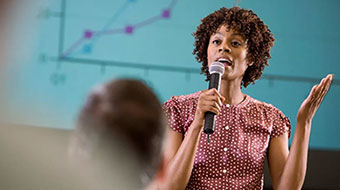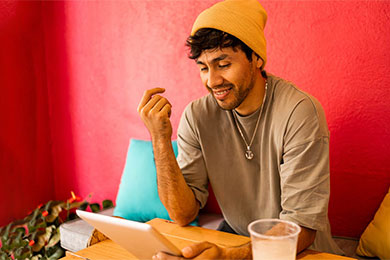The earth is warming — and is expected to continue warming in the years ahead. With temperatures rising, heat waves — also called “extreme heat” — are occurring more frequently in areas across the U.S., especially during the summer. A heat wave is a period of at least two or three days when temperatures reach or exceed 90°F (32°C).1
Extreme heat — especially when combined with high humidity — poses a serious health risk to both people and pets. Every household should be prepared to stay safe during heat waves. In addition, extreme heat can cause substantial damage to property. Homeowners should consider taking key steps to protect their property from damage caused by repeated exposure to extreme heat.
Excessive heat and humidity cause property damage
The combination of excessive heat and humidity can cause drying and cracking of building materials, the growth of mold and mildew, and the deterioration of a home’s structural integrity. You can help protect your home against the damaging effects of relentless heat and humidity by taking the following preventive measures.
Exterior Paint
Extreme heat can cause paint to bubble and crack. These cracks can create openings that allow moisture to enter your home, attracting insects and causing mold and mildew growth. To prevent damage, consider the following options:
- Use a light-colored paint that can better reflect the sun’s heat than dark colors.
- Invest in elastomeric paint for stucco, concrete and masonry, roofs, brick, and metal exteriors. While more expensive than other types of exterior paint, elastomeric paint adds a thick, durable, watertight coating that helps create a reliable barrier against moisture.
Wood Siding and Decks
Exposure to high temperatures and direct sunlight can dry out wooden structures, like sliding and decks. Wood can shrink, warp, crack, and become discolored. To reduce the risk of damage, consider taking the following steps:
- Regularly inspect wood siding, decks, trim, and other structures for any signs of damage.
- Immediately address any concerns to prevent further damage.
- Seal wooden decks and porches with a protective coating product, such as a UV/fade-resistant sealant or elastomeric paint.

Roofing Materials
Roofing materials can blister and crack due to extreme heat. Moisture from humidity can cause shingles to expand, leading to roof deterioration. Along with regular roof inspections to identify any damage, the following steps can help protect your home:
- Install a vapor barrier as part of your roof to prevent leaks caused when shingles expand and deteriorate.
- Coat and seal your roof, if feasible.
- Ensure your attic is properly insulated.
- Check roof caulking and tar for cracks — and conduct repairs if needed.
- Install light-colored roofing material to reduce heat absorption.
Foundation
Direct sunlight and extreme heat cause soil around a home to dry out, shrink, and pull away from the foundation. As a result, a home’s foundation can shift and settle, causing cracks in foundation walls and leading to other damage, such as cracked drywall. To prevent this type of damage, keep the soil around your home moist using a sprinkler system or manually watering. At the same time, it’s important to avoid overwatering.
Metal Pipes
Fluctuating temperatures cause metal pipes to expand and contract, which can lead to leaks. Installing a water leak detection device can help you protect your home from interior water damage caused by leaking or burst pipes. Visit this page for more information on water leak detection devices.
Protect your home’s interior and belongings by regulating the temperature
It isn’t just the exterior of the home that can suffer from extreme heat. Interior floors, household appliances, and certain possessions such as books, artwork, and musical instruments can also be damaged by high heat and humidity. To help regulate the temperature inside your home, consider taking the following actions:
- Tint windows or install blinds or drapes.
- Install double pane or Low-E glass windows.
- Service your air conditioning system, as needed, and regularly change the filter.
- Insulate the walls, ceilings, and floors.
- Use a dehumidifier to help control humidity inside your home.
- Install a smart or programmable thermostat.
- Install weatherstripping or caulk around doors and windows to keep cool air inside and prevent leaks.
- Use ceiling fans.
Insights and expertise








This document is advisory in nature and is offered as a resource to be used together with your professional insurance advisors in maintaining a loss prevention program. It is an overview only, and is not intended as a substitute for consultation with your insurance broker, or for legal, engineering or other professional advice.
Chubb is the marketing name used to refer to subsidiaries of Chubb Limited providing insurance and related services. For a list of these subsidiaries, please visit our website at www.chubb.com. Insurance provided by ACE American Insurance Company and its U.S. based Chubb underwriting company affiliates. All products may not be available in all states. This communication contains product summaries only. Coverage is subject to the language of the policies as actually issued. Surplus lines insurance sold only through licensed surplus lines producers. Chubb, 202 Hall's Mill Road, Whitehouse Station, NJ 08889-1600.










